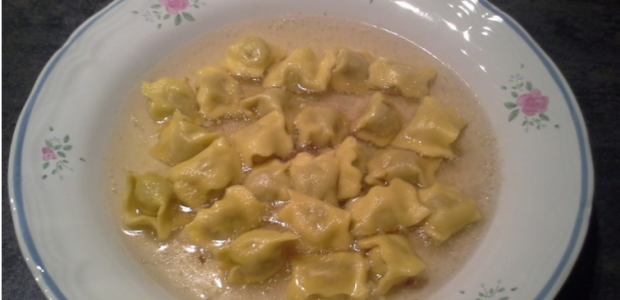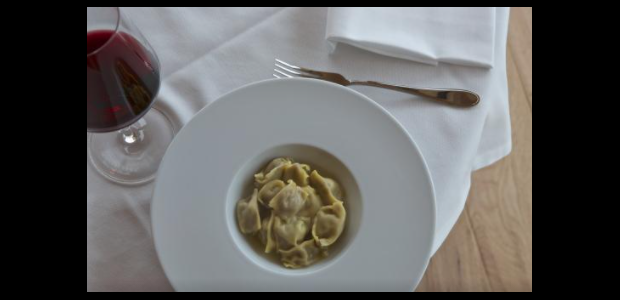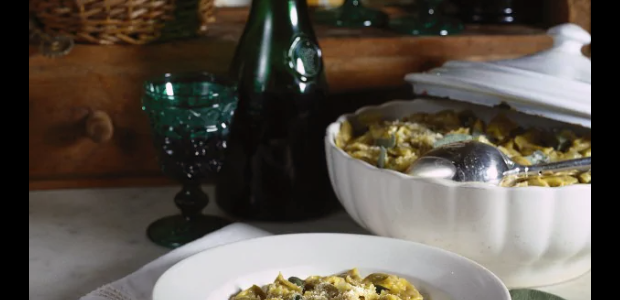Languages
They are agnolotti, not anolini. But so tasty!
Agnolotti ofl plin. Strictly in broth
The cuisine of "recovering food leftovers”
Stuffed pasta originated as food for wealthy people. The first type of which we have certain information is the raviolo, it appeared for the first time between the 12th and 13th centuries on the tables of the nobility in various parts of Italy. The popularity of stuffed pasta grew so quickly that in the fifteenth century, it was already present in the cookbooks of many regions. It is believed the origin of the word "raviolo" derives from its main ingredient, that is a type of cheese of cow or goat called "raviggiuolo" or "revaggiolo", therefore it can be assumed that in ancient times with "raviolo" was indicated only the filling, only later the term passed to indicate both the outside and the inside.
Plin AgnolottiAgnolotti (in dialect agnolòt or aulinòt) are the typical stuffed pasta of Piedmont. The agnolotti of Plin, however, is a speciality of the areas of Monferrato and Langhe: it is a portion of fresh pasta, smaller in size compared to the first ones, and stuffed mainly with meat. The origins of this dish are quite uncertain, but it seems to have been born to ennoble the leftovers of the roast. The name "agnolotti" would derive from the Piedmontese term "anulòt": a ring-shaped instrument used to prepare this type of ravioli; once this egg pasta was round, only later did it take on a squarer shape.
The dialect word "plin", pinch, refers to how the filling is sealed inside the fresh pasta, by delicately pinching the ends.
Among the curiosities, there is the ancient custom of serving and consuming these agnolotti "al tovagliolo" (“in the napkin”): after having cooked and drained them, they were put inside a napkin to preserve their softness. Then they were eaten without any seasoning to exalt the taste of the filling, if not in some rare cases in which they were accompanied by a cup of light broth. Plin Agnolotti do not require an elaborate preparation nor a long list of ingredients.
Ingredients for the pastry: flour 00 and eggs; for the filling: pork and veal meat, onion, oil and salt. (For the video-recipe click here).
As per tradition...
Stuffed pasta served in meat broth is a gastronomic symbol of Christmas and, more generally, of the holidays. So, if on these occasions in the Emilian dishes we will find tortellini, in those Piedmontese dishes we will taste Plin in broth. And if for the latter the stuffing is mainly based on meat, for the first courses there are many alternatives, from “Caramelle” ricotta and spinach of Piacenza and “pumpkin Cappellacci” of Ferrara to the “Anolini” of Parma stuffed with eggs, braised meat and Parmesan cheese, and then again the "Tortellini" of Castelfranco, stuffed with pork and beef, eggs, Parmigiano cheese, ham, mortadella and nutmeg.
Tastes have changed since the Renaissance and the regional variants have increased, but stuffed pasta remains a delicious and insurmountable certainty.








